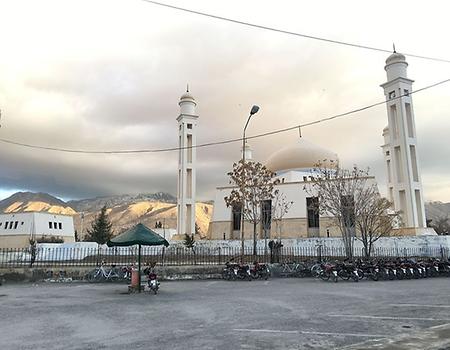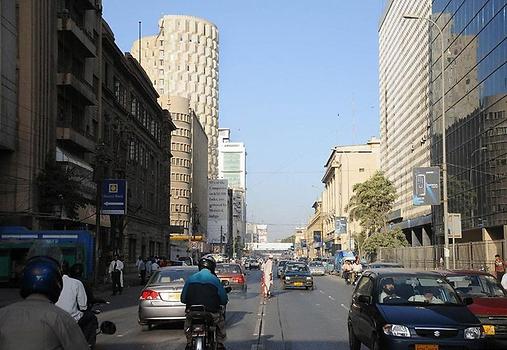CITIES OF PAKISTAN
Author: Haris Naeem, August 2017
Introduction
Pakistan with a population of close to 200 million and growing urbanisation has of course a large number of cities in its 5 provinces Punjab, Sindh, Khyber Pakhtunkhwa, Balochistan and Gilgit Baltistan.
A list of the largest cities by population, ranked with the larger ones first, is shown below. A discussion on how this ranking is achieved is presented as last section of this contribution.

Following is a short description of the listed cities and few others which are noted for some interesting aspects.
1. Karachi
Karachi is the capital city of Sindh province and the largest city in Pakistan according to area and population. It is the 4th most populous city in the world. It is a coastal city located on the banks of the Arabian Sea. Therefore its climate is affected by sea, with high winds blowing most of the time. The city is considered to be the financial capital of the country because trade activity is highest in the area and most companies have their headquarters situated here. The city has a formal economy estimated to be worth $113 billion/year as of 2014. Karachi collects over a third of Pakistan’s tax revenue and generates approximately 20% of Pakistan’s GDP. It was the capital after independence till 1968, when Islamabad became capital.
Famous attractions in the city include Mazare Quaid (Founder of Pakistan, Quaid e Azam’s mausoleum) Quaid e Azam, Clifton beach, various shopping malls, Pakistan National Museum, Pakistan Air Force Museum, Bagh Ibn e Qasim, Bagh e Jinnah(Jinnah Garden), Boat basin park and much more. Most of the film and drama industry of Pakistan is located in Karachi therefore both national and international events take place here all the time. Though, in recent years the city has faced many issues like rise in street crimes and municipality issues by the Government. The situation is improving from the past few months as Police as well as Rangers have taken care of security and several organizations are working with the Government to solve the problems of the huge number of residents living in the city.
2. Lahore
Lahore is the capital city of Punjab province and the second largest city in Pakistan. Lahore lies on the banks of the river Ravi at an altitude of about 215 m above sea level, a few kilometers from the border with India. It is a historical city and is considered to be the cultural hub of Pakistan. Lahore has beautiful mosques, mausoleums, parks and various shopping spots. Some of the places of interest include Badshahi Mosque, Shalimar Gardens, Minar e Pakistan (commemorating Pakistan Resolution 23 March 1940) Pakistan Resolution, Allama Iqbal tomb, Wagah Border(Pak-India Border), Anarkali Bazaar(Market) and Food Street. One can witness true Mughal architecture in the city by vising different areas.
Lahore is well known for its culinary delights. People living here are extremely fond of food and that is the reason it has the highest number of places for food with the tastiest dishes of any city. In recent years, Lahore has been upgraded quite a bit in its infrastructure where special attention has been given to the road network, greenery and cleanliness in the city. A Metro Bus was introduced in 2013 with a 27 km long track which connects major areas of the city. Another Orange Line Train project in under construction. it will connect the city by an elevated train line. No matter what, the highlight of this city are its food and its openhearted people. A saying goes in Pakistan, “One who has not seen Lahore is like he was never born”.
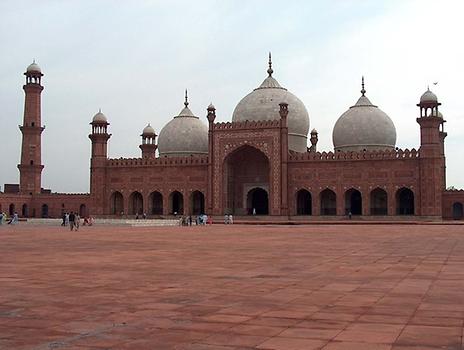

3. Faisalabad
Faisalabad is a city in eastern Punjab. It is the industrial hub of Pakistan with the highest number of industrial units located here. As the area is surrounded by the Chenab river, various agricultural products are produced here including cotton, wheat, sugarcane, different fruits and vegetables. Faisalabad originally began as Lyallpur district in 1904 when it was named in honour of the then Lieutenant-Governor of Punjab, Sir James Broadwood Lyall, for his services in the colonisation of the lower Chenab Valley. It was later changed to Faisalabad in 1970s by the Government of Pakistan in honour of King Faisal of Saudi Arabia who has made many financial contributions to the area.
Faisalabad contributes 20 percent to the GDP of Pakistan and is often referred to as the “Manchester” of Pakistan. The Faisalabad Clock Tower(Ghanta Ghar) is a landmark of the city and its eight adjoining bazaars are each famous for their special items sold. Due to its high population and trade activity, Faisalabad is a very busy town. Roads and city areas are always crowded with people. Several cultural festivals are held in the city including Basant which is a very famous kite festival celebrated all over Punjab. Tourist attractions include Ghanta Ghar, various bazaars(markets), Jinnah garden, Company Bagh (where a monument on Sir Charles James Lyall is situated), Gatwala Wildlife park and Canal park. Theater is very popular throughout the city and many of the major shows are operated here.
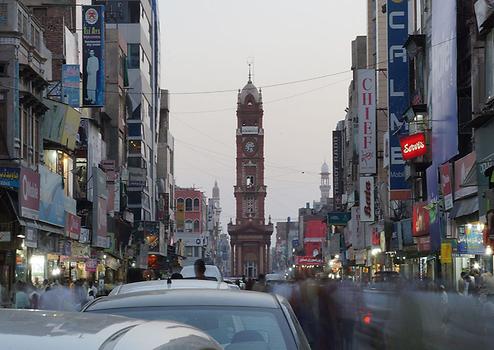
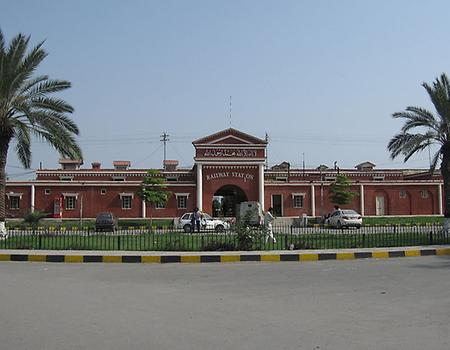
4. Rawalpindi
Rawalpindi is a city located in the Potohar region of Punjab. It is called the twin city of Islamabad as they are located side by side. It has an area of 259 square km and a population of about 320.000. The city was destroyed during the invasion of Mahmud of Ghaznavi before being taken over by Gakhars who went on to name the city as “Rawalpind” in 1493. In 1765, it became part of the Sikh empire and eventually came under British Raj in 1849. In 1851, it became the largest Garrison town of the British Indian Army and it is part of this reason that today the headquarters of the Pakistan army are situated here. Thus, it is a major military city. The area is socio-economically tied with Islamabad therefore it has a mixture of developed and still developing infrastructure. Punjabi culture reigns in the city as most of the residents are Punjabi speaking.
People of Rawalpindi, especially youngsters who are called ‘Pindi boys’ are famous for their fun loving habits and activities. Places of interest in the city include Ayub Park, Jinnah Park, Bahria Town, Rawalpindi golf club, Liaqat bagh, Rohtas Fort, Paharwala Fort, Taxila heritage site(35km from Rawalpindi) and others. Liaqat bagh holds a critical spot in the history of Pakistan as two of the Prime Ministers of Pakistan were assassinated here: Liaqat Ali Khan in 1950 and Benazir Bhutto in 2007.


5. Gujranwala
Gujranwala is a city located in Punjab.The city was under the rule of Ghaznavid dynasty till 1193. It was then ruled by the Sikh Empire after the decline of the Mughal dynasty. The British captured the area in 1848 and built a network of railway lines to connect Gujranwala with other cities of the Punjab. It has a hot, semi arid climate with winters remaining warm as well. The buildings in the area are built in British style including the main railway station of the city. The city is famous for its local wrestlers and their diet. People living here generally have a huge diet, comprising of lassi(milk with yogurt), bread(roti) and various dishes of chicken. Some attractions in the area include Sheranwala Bagh, Nishan e Manzil, Quba Park and Model Town Park. Along with other cities of Punjab, it is an epicenter for Punjabi culture.

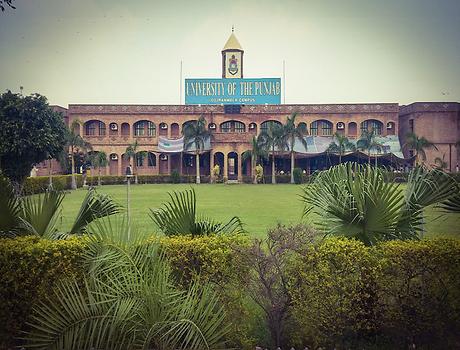
6. Peshawar
Peshawar is the capital city of Khyber Pakhtunkhwa province. It lies in the broad valley near the eastern end of Khyber Pass, close to the border with Afghanistan. Peshawar’s history goest back to 539 BC, making it the oldest city in Pakistan. It has been a gateway to most of the explorers and invaders of the past starting from Alexander the Great to the Mauryans, Huns, Muslim explorers Abdullah Shah Durrani, Mahmud Ghaznavi and the Mughals. The Khyber pass which connects Afghanistan and Pakistan, is well known to be the route of most of these invasions. Today, it is a major trade route between Pakistan and other countries in Central Asia. Much of the old city of Peshawar consists of traditional architecture having high walls. Wood is used in many places for construction.
Tourist attractions in the city include the famous Qissa Khwani Bazaar, Bala Hisar Fort, Gurkhatri, Sikh Gurudwara, Wazir Bagh, Shahi Bagh, Peshawar Museum and others.
There are many cultural festivals held in the city specifically highlighting Pakhtun culture and traditions. Music is also important in the area. Local dances and instruments are famous around the world.
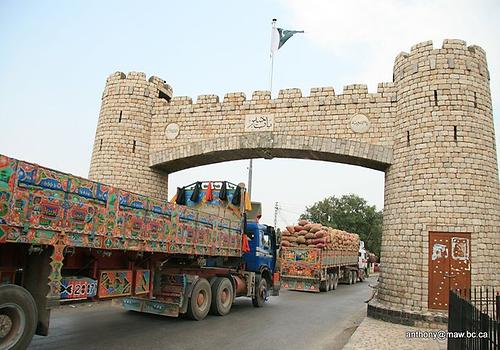

7. Multan
Multan is a city located in central Punjab along the banks of Chenab river. It is called the “City of Saints” because of its large number of tombs and shrines. The region of Multan has been continuously inhabited for the past 5000 years. Multan is believed to have been the Malli capital that was conquered by Alexander the Great in 326 BCE as part of the Mallian Campaign. After the Greek era, the city has been under the rule of various Muslim tribes like Ghasnavids, Tughlaqs, Suris, Mughals and then the Sikhs. The British took over the region in 1850 and built a series of canals in the area.
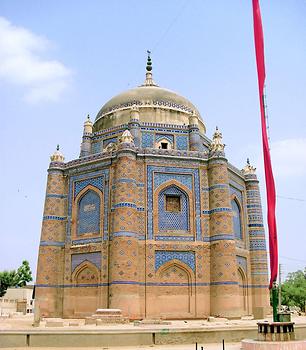
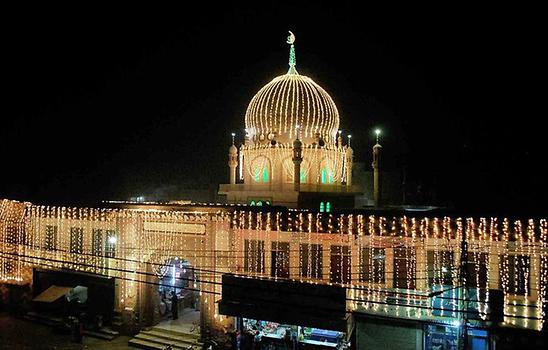
The climate of Multan is arid with very hot summers and mild winters. The city is famous for its production of mangoes of different variety. Due to the forts and shrines located in the city, Multan is considered a heritage site of Pakistan. Some of the famous shrines include the tomb of Shah Rukn e Alam, Bahauddin Zikriya, Shamsuddin Sabzweri, Khwaja Awais Kagha and Pir Adil Shah. They are all saints of Multan and each year, Urs (annual festivals) are held at tombs that are beautifully decorated for this purpose. People from other cities travel to Multan to attend the events.
8. Hyderabad
Hyderabad is a city located in Sindh. It is the second largest city in Sindh, after Karachi. It is said that Mian Ghulam Shah Kalhoro of the Kalhora Dynasty founded the city in 1768. A formal layout of the city laid is due to his son, Sarfraz Khan, in 1782. It had been under the rule of Muhammad bin Qasim until the British arrived. The city lies on the east bank of Indus river which is the largest river in Pakistan. It has a hot climate with temperatures reaching 50 degree Centigrade in June. Winters are mild as well. Two of Pakistan’s largest highways, the Indus Highway and the National Highway join at Hyderabad. Recently, Karachi and Hyderabad are also connected by a new Motorway. The area is a major agricultural producer of rice, cotton, wheat and fruits.
Famous attractions in the city include Pacco Qillo (Fort built in Kalhoro dynasty), tombs of Talpur Mirs Talpur Mirs, Rani Bagh, Sindh Museum and others. The area of Sindh is famous for its Sufi poets and writers. Hyderabad has served many Sindhi literary campaigns throughout the history of Pakistan which is evident from its daily newspapers like Kawish, Ibrat and Daily Sindh.

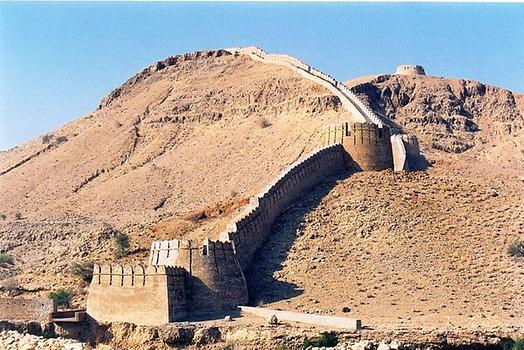
9. Islamabad
Islamabad is the capital city of Pakistan, located in the Potohar plateau below the Margalla Hills. It was built during the 1960s when the Greek architect Constantinos A.Doxiadis served as the lead architect of the project. The city’s master plan divides it into 8 zones including administrative, diplomatic enclave, residential areas, educational sectors, industrial sectors, commercial areas, and rural and green areas. It is located in the federal district and does not form part of any province. Islamabad is the most well planned and modern city of Pakistan and has the best infrastructure in the country. Highlights of this city include Faisal Mosque, Daman e Koh (Hill station in Margalla Hills), Saudi Pak Tower, Pakistan Monument (Pakistan Monument), Pir Sohawa( Hill station few kilometers ahead of Daman e Koh), Centaurus shopping mall and the diplomatic enclave. The city is also known for its parks and forests including Fatima Jinnah Park and Margalla Hills National Park. It is monitored by 2000 surveillance cameras under the Safe city Project which makes it a very secure and peaceful city.
People residing in Islamabad are mostly natives of other cities having there jobs in the capital. Therefore it is a very diverse community. The city lies along the green belt so lots of plantation is to be seen as one travels along. The Metro Bus connects 26 of the major areas between Islamabad and Rawalpindi along with other public transport. Being the capital, air travel is also very high. Therefore a new International Airport is being constructed in Fateh Jang area, near the city, offering improved infrastructure and services.

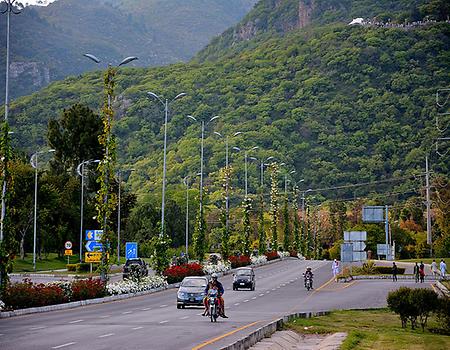
10. Quetta
Quetta is the capital city of Balochistan province. The city is known as fruit garden of Pakistan as numerous fruits are produced here due to its location and climate. It lies at an altitude of 1680 m therefore it has a generally cold climate with snowfall in winter making the temperature drop to less than -10 degree Centigrade. However in summers, the weather remains mostly dry and warm. Historically, the area has been under the rule of Mahmud Ghaznavi and Mughal emperor Humayun. It was briefly captured by British during the First Afghan War in 1839. It officially became part of the British Empire in 1876. People living here value to their traditions and culture highly. They wear traditional dresses like Shalwar kameez with a turban at top. For women, the dress is a long shalwar kameez with embroidery. Traditional Pushto and Balochi music is common here with instruments like rubab, sitar and flute. The famous dance of Pahtuns, Attan and Kathak originates from here and is known all over the world.
Famous attractions in the area include Hanna Lake, Hazarganji Chiltan National Park, Command and Staff college museum, Archaeological museum, fruit parks and a few others. The bazaars(markets) in Quetta are famous for their handicrafts including Afghan rugs, fur coats, embroidered jackets, waistcoats, sandals, and other items. The traditional dishes are Kadi kebab, Lamb Roast and Saji. Overall, if anyone wants to witness the culture of Pakistan in one place Quetta is the city to visit !
